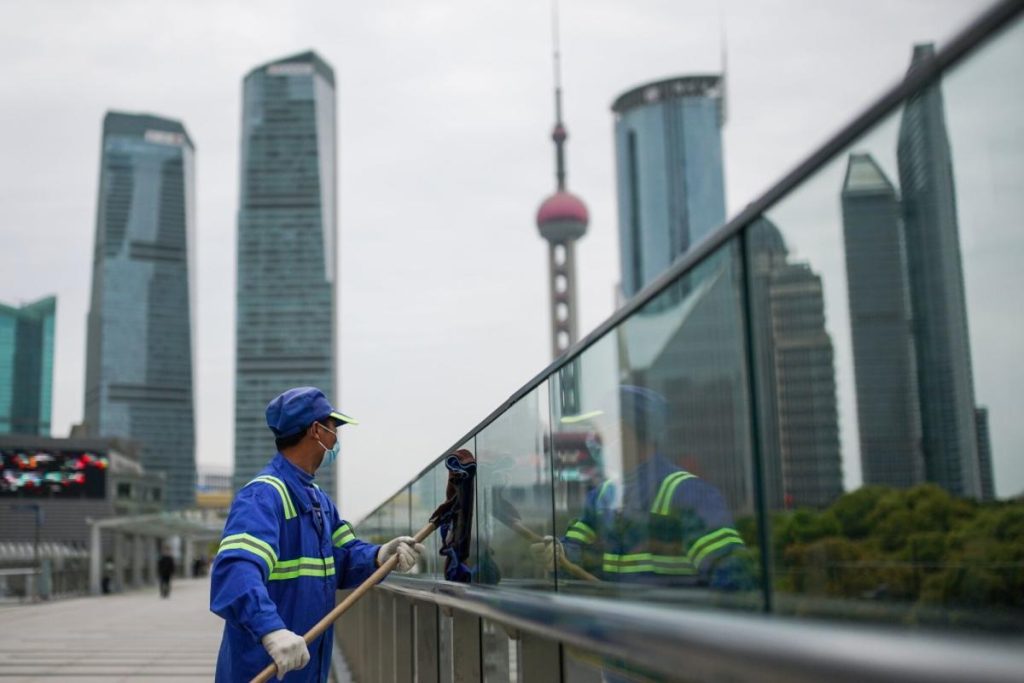(Bloomberg) — President Xi Jinping unveiled a sweeping plan to shore up the finances of China’s debt-ridden local governments, while the Communist Party unveiled its long-term plans for the world’s second-largest economy, with few major surprises.
Most read articles on Bloomberg
China’s top leaders outlined measures to resolve the debt crisis facing local governments in a 22,200-word resolution at a key meeting reported by the state-run Xinhua News Agency on Sunday. The plans, which state media had already hinted at, center on shifting revenue from the central government to local governments, including by having them receive a larger share of consumption taxes.
Ding Shuang, chief economist for Greater China and North Asia at Standard Chartered Bank, said Xi’s proposal marks the “third major tax and fiscal reform” in recent years, citing a 1994 move to give the central government a higher share of revenue than local governments and a series of decisions beginning in 2013 to allow local governments to issue bonds as other big changes.
“The central government’s revenue was set too high but is now being adjusted,” Ding said of a framework set up under President Jiang Zemin, adding that the change “will ease the imbalance in spending responsibilities and revenues between the central and local governments.”
The yuan was little changed in early trade on Monday as investors digested the plenary statement and the unexpected cut in short-term interest rates. More concrete policies are likely to be announced later this month when the 24-member Politburo meets in July to discuss this year’s economic policy.
The four-day Third Plenary Session in Beijing was the first that Xi has presided over a reform-focused Central Committee meeting since he defied precedent and won a third term in power. Around 400 officials endorsed Xi’s vision of advanced manufacturing to drive China’s $17 trillion economy, signaling no major changes to his overall plan.
The last time Xi used the meeting to map out economic reforms was in 2013, when leaders pledged a “decisive role” for markets and raised hopes for more liberal policies. Since then, the top leader has made clear his determination to tighten state control over the economy and pull the country out of boom-and-bust debt cycles. The resolution reflected that and affirmed his long-term vision.
“Despite global discontent, China’s leadership seems very comfortable with its supply-centric growth model,” said Alicia Garcia Herrero, chief Asia-Pacific economist at Natixis. “The reason for this is likely that Xi Jinping really wants China to become less technologically dependent on the U.S. and more self-reliant.”
Instead, Xi appears to be tweaking policy to address risks. Authorities are under pressure to resolve a 66 trillion yuan ($9.1 trillion) hidden local government debt crisis and rebalance the economy as U.S. and European leaders accuse Beijing of trying to supplement weak domestic demand with exports. Allocating a larger share of sales tax revenue to localities could address both problems by incentivizing authorities to boost consumer spending and providing new sources of funding.
Details of how the policy would be rolled out were omitted from the draft resolution, but imposing additional taxes on goods risks further dampening consumer confidence at a time when falling property prices are hitting people’s main asset.Retail sales grew at their slowest rate since December 2022 last month after China’s second-quarter growth rate fell short of expectations.
Officials also promised to give city governments more power to regulate local real estate markets, in line with policies that have helped local governments stave off a housing downturn over the past two years, and vowed to build more subsidized housing and reform a pre-sale model that has allowed developers to fail to deliver millions of homes that residents have already paid for.
China’s most powerful leader since Mao Zedong said in a separate statement that national security had been given a “higher” position by the four-day meeting, suggesting it would take priority over the economy, though the official resolution said Beijing would strive to “achieve a positive interaction” between development and security.
The officials also signaled a possible expansion of Beijing’s surveillance apparatus and vowed to “explore and establish a nationally unified population control mechanism” — the first time the phrase had been used by a senior leader.
“President Xi Jinping’s emphasis on security indicates that this development is ultimately aimed at protecting national security,” said Alfred Wu, an associate professor at the Lee Kuan Yew School of Public Policy at the National University of Singapore.
Predictably, the report prominently features a push for “high-quality development” — a vague slogan usually interpreted as emphasizing the quality, rather than the absolute pace, of economic growth. At its heart is Xi’s ambition to propel the Chinese economy up the value chain through technological innovations such as electric cars and solar panels.
The Assembly called for greater private sector participation in the country’s major technology projects and pledged to “open up key national infrastructure for scientific research to private companies.” This explicit invitation to private sector participation breaks new ground and elevates the role of private companies, according to Bloomberg Economics.
China also promised improved policies for developing areas such as artificial intelligence, new materials and quantum technology. The country has vowed to build more manageable supply chains in areas such as integrated circuits and advanced materials.
The development of semiconductors and AI is central to Beijing’s broader vision of displacing technology from the United States as it increasingly seeks to corral China. Economists rank technological self-sufficiency as one of the top three economic issues Chinese leaders must address in the medium to long term.
“I think the Third Plenum didn’t change the government’s policy goals,” said Zhang Zhiwei, president and chief economist at Pinpoint Asset Management, “but it introduced new measures to achieve those goals.”
–With assistance from Jessica Sui, Cormac Mullen, James Mayger, Yujin Liu, Lucille Liu, Josh Xiao, Tian Ying, and Alan Wong.
(Updates with details, analyst comments, etc.)
Most read articles on Bloomberg Businessweek
©2024 Bloomberg LP


